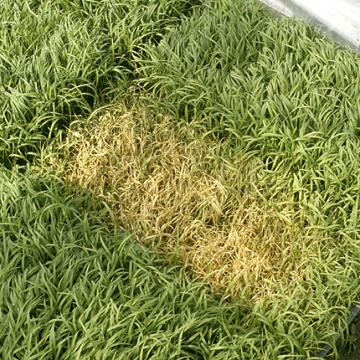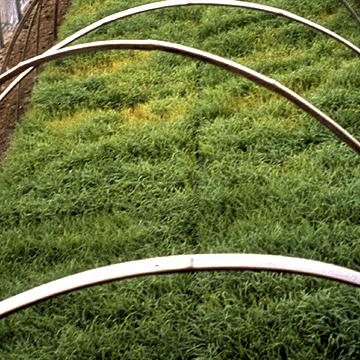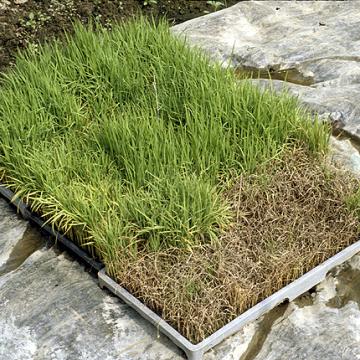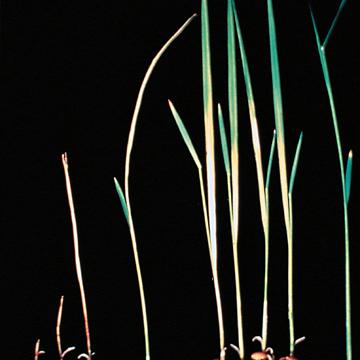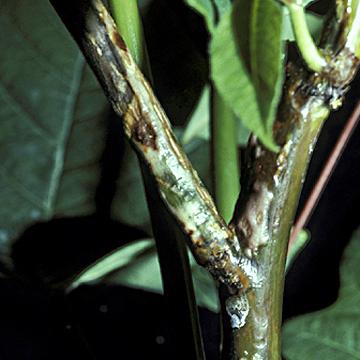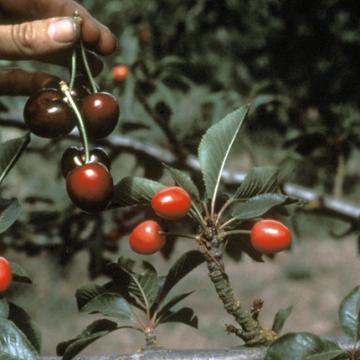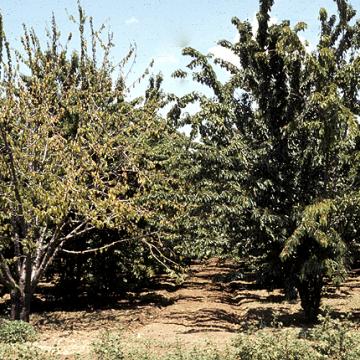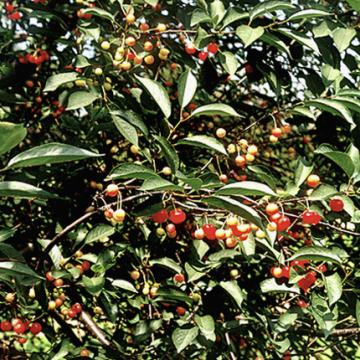DISEASE: Bacterial seedling blight
HOST: Rice
Dead and light brown, infected seedlings in nursery tray.
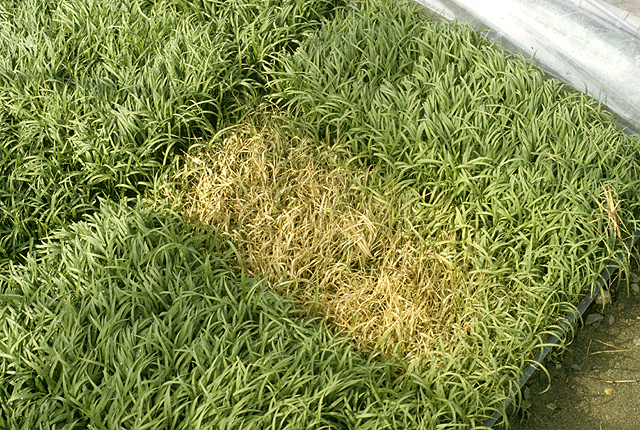
Bacterial seedling blight | Rice
DISEASE: Bacterial seedling blight
HOST: Rice (Oryza sativa)
PATHOGEN: Burkholderia glumae
PATHOGEN SYNONYM: Pseudomonas glumae
SOURCE: K. Azegami, M. Goto
DISEASE: Bacterial seedling blight
HOST: Rice
Brown, desiccated seedlings in nursery exhibiting basal chlorosis and withering of second and third leaves.
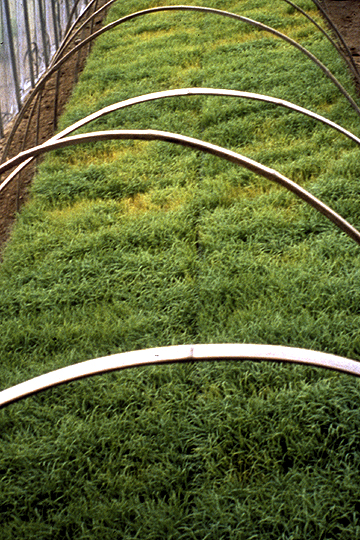
Bacterial seedling blight | Rice
DISEASE: Bacterial seedling blight
HOST: Rice (Oryza sativa)
PATHOGEN: Burkholderia plantarii
PATHOGEN SYNONYM: Pseudomonas plantarii
SOURCE: H. Honma, M. Goto
DISEASE: Bacterial seedling blight
HOST: Rice
Dead seedlings in half of nursery tray. Symptoms are basal chlorosis and withering of second and third leaves. Infected seedlings become reddish brown and desiccated in time.
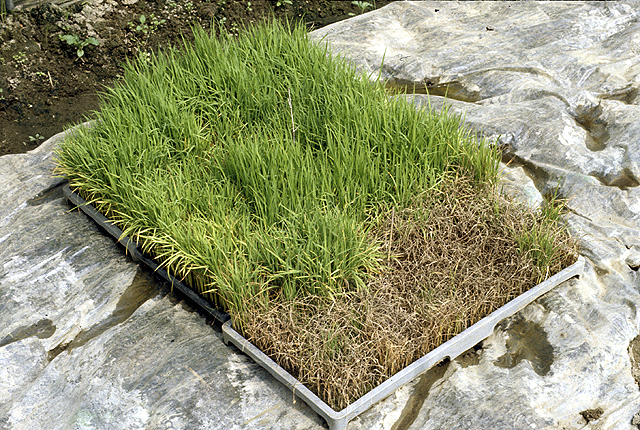
Bacterial seedling blight | Rice
DISEASE: Bacterial seedling blight
HOST: Rice (Oryza sativa)
PATHOGEN: Burkholderia plantarii
PATHOGEN SYNONYM: Pseudomonas plantarii
SOURCE: K. Azegami, M. Goto
DISEASE: Bacterial seedling blight
HOST: Rice
Basal chlorosis and withering of second and third leaves. Seedlings become reddish brown with a dry appearance over time. Root growth is retarded and seedlings easily lodge.
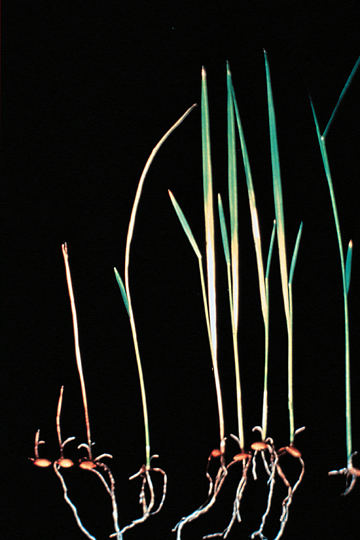
Bacterial seedling blight | Rice
DISEASE: Bacterial seedling blight
HOST: Rice (Oryza sativa)
PATHOGEN: Burkholderia plantarii
PATHOGEN SYNONYM: Pseudomonas plantarii
SOURCE: K. Azegami
DISEASE: Greasy center
HOST: Poinsettia
Stem with dark cankers and copious ooze. Necrotic areas are greasy in appearance and eventually turn light tan to brown with a papery texture as the cuticle becomes detached.
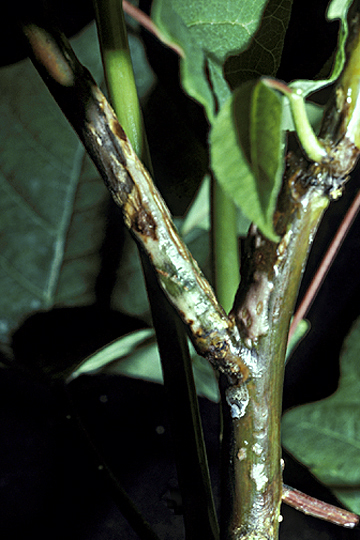
Greasy center | Poinsettia
DISEASE: Greasy center
HOST: Poinsettia (Euphorbia pulcherrima)
PATHOGEN: Pseudomonas viridiflava
SOURCE: R. Raabe
DISEASE: X-disease (Western X) or buckskin
HOST: Cherry
Comparison of normal, dark cherries (in hand) with infected, immature cherries with less pigmentation.
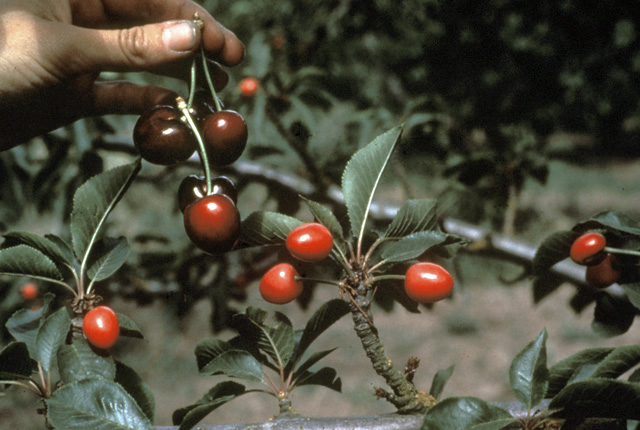
X-disease (Western X) or buckskin | Cherry
DISEASE: X-disease (Western X) or buckskin
HOST: Cherry (Prunus avium)
PATHOGEN: 'Candidatus Phytoplasma pruni'
PATHOGEN SYNONYM: Phytoplasma X-disease group
SOURCE: A. Purcell, M. Davis
DISEASE: X-disease (Western X) or buckskin
HOST: Cherry
Healthy cherry shoot (left) and stunted shoot (right).
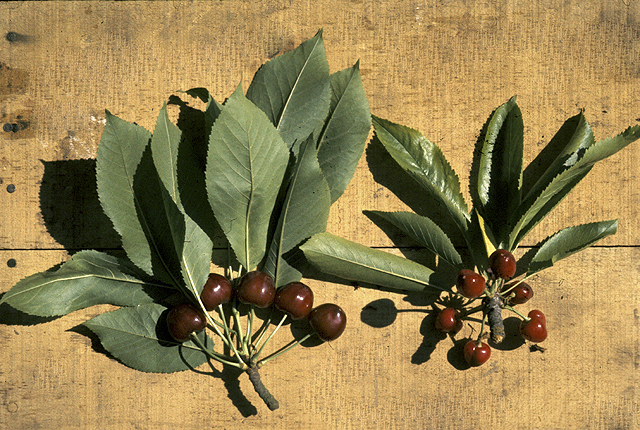
X-disease (Western X) or buckskin | Cherry
DISEASE: X-disease (Western X) or buckskin
HOST: Cherry (Prunus avium)
PATHOGEN: 'Candidatus Phytoplasma pruni'
PATHOGEN SYNONYM: Phytoplasma X-disease group
SOURCE: S. Thomson
DISEASE: X-disease (Western X) or buckskin
HOST: Cherry
Infected trees on 'Mazzard' rootstock (right) may live for years, producing fruit with symptoms. Trees on 'Mahaleb' rootstock (left) usually die rapidly in year of infection, about time of fruit ripening.
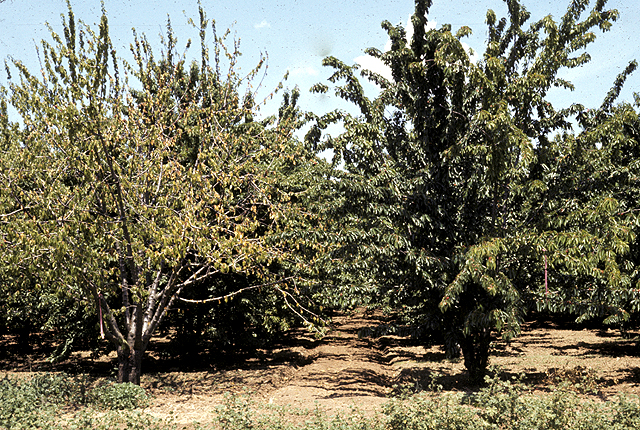
X-disease (Western X) or buckskin | Cherry
DISEASE: X-disease (Western X) or buckskin
HOST: Cherry (Prunus avium)
PATHOGEN: 'Candidatus Phytoplasma pruni'
PATHOGEN SYNONYM: Phytoplasma X-disease group
SOURCE: S. Thomson
DISEASE: X-disease (Western X) or buckskin
HOST: Cherry
X-disease causes undersized, yellowish fruit. Diseased branches turn rusty red near end of season. Some defoliation occurs on diseased branches.
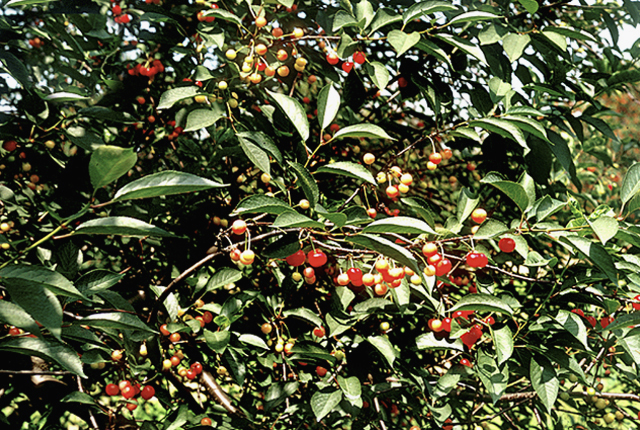
X-disease (Western X) or buckskin | Cherry
DISEASE: X-disease (Western X) or buckskin
HOST: Cherry (Prunus cerasus)
PATHOGEN: 'Candidatus Phytoplasma pruni'
PATHOGEN SYNONYM: Phytoplasma X-disease group
SOURCE: A. Jones


